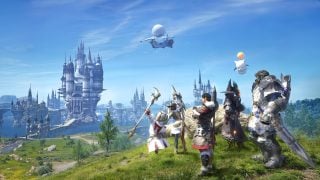Today’s marks the twenty-fifth anniversary of the release of Street Fighter II: The World Warrior. As the first title in what would become a long series of Street Fighter II titles, as well as the codifier of what the Street Fighter series is today, The World Warrior represents the starting of something special for not just fighting games, but video games as a whole. In honor of that celebration I’ll be looking back at what makes Street Fighter such an iconic piece of both history and culture.
Round One…Fight!
With its multi-national roster of eight world warriors, Street Fighter II immediately had personality in spades. From iconic Japanese wanderer Ryu, all American Guile with his impossible hair, and Indian yogi Dhalsim with his even more impossible everything the character select screen was instantly captivating. Each of the characters laid the groundwork to codify archetypes and mechanics that are still in place today. It’s no understatement that nearly every grapple-based character owes something to Russian wrestling hero Zangief and his spinning pile driver. Chun-Li became the series first female fighter and was just as powerful and able as the rest of the cast, while being one of the most morally driven characters. Ryu may be the official mascot but Chun-Li has had nearly as many appearances across the series, a testament to her staying power. While they all could be seen as caricatures of their home countries, each of these characters have successfully grown and developed into lasting national icons to be proud of, a testament to Capcom’s handling of their cast.

Each character also had a home stage and theme to call their own, which have all similarly become ingrained in players minds. E. Honda’s bathhouse, with its striking murals that would come alive after every round, stands out in particular. Fans of Smash Bros. will have seen some of Ryu’s Suzaku Castle stage but in its original design it was even more striking, a dramatic rooftop battle in a game where most other arenas were more sensible (or at least accessible.) Its driving and uplifting music, composed by Yoko Shimomura, has become a motif of the series. These both served as an indirect way of alluding to Ryu’s character, motivated by his desire to fight no matter the circumstances or location.
While story has never been a priority when it comes to Street Fighter all of the characters and their motivations are clearly defined, allowing for a narrative to form around them to justify the tournament setting. With the evil organization Shadaloo striving for world dominance under the leadership of final boss M. Bison and his three other (initially) unplayable boss characters, it allowed for multiple games worth of story development as well as several comic series, animated specials and, of course, a feature film that has become iconic in its own right.
Round Two…Fight!
While all of these things permeate the series on a surface level, it’s the inner workings of the game that have defined its genre. With the wide assortment of special move inputs it allowed an intense amount of variety across characters. The template of projectile, anti-air, and a gap closing pressure move have become staples of character design both within Capcom and other 2D fighting titles. Ryu did them first. While it wasn’t in the original World Warrior release, the Street Fighter II series brought the super meter to fighting games and along with it flashy attacks that just begged to be used as finishing moves. While many decry the multiple re-releases, each one brought something new to the fold, including four “new challengers” including Bruce Lee homage Fei Long and longstanding fan-favorite Cammy.

Street Fighter is a very special series, with a thriving competitive scene. A version of Street Fighter almost always headlines major, multi-game tournaments focused on fighting games. With the longstanding staple Street Fighter IV, cult (and my personal) favorite Street Fighter III, and the soon-to-be released Street Fighter V, the fans of this franchise always rise up in some form. All of that is owed to Street Fighter II’s humble beginnings. I’ve lost more quarters to Street Fighter machines than any other arcade game, developed friendships over countless matches of Third Strike, and can always manage to talk my brother into a few matches even when he’s since kept his video gaming to a minimum.
With the Ryu amiibo coming soon, Nintendo fans should always remember just how much Street Fighter means to them even if they don’t know it. To Capcom, the Street Fighter teams across the years, and the community of world warriors everywhere I say:


